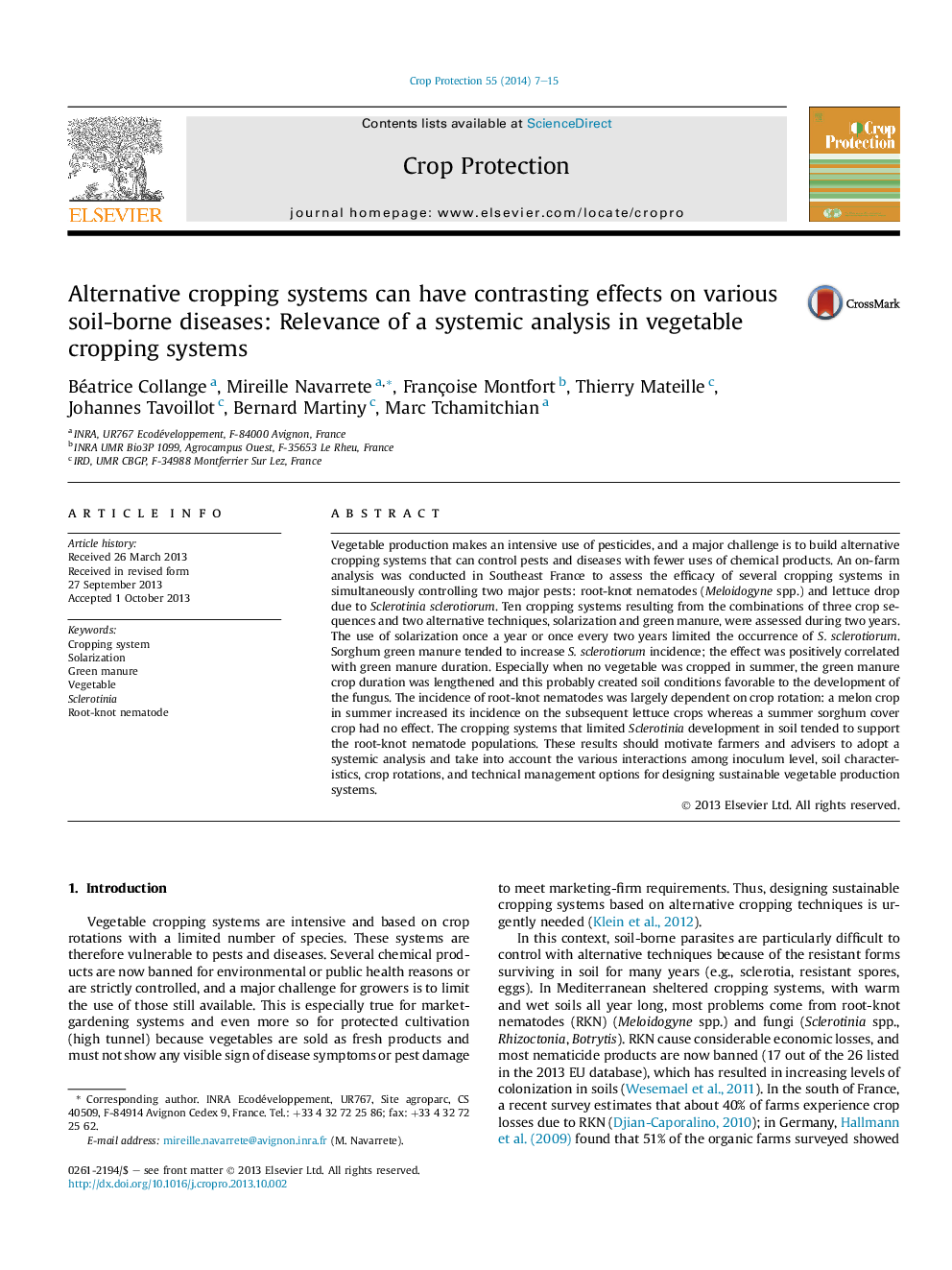| کد مقاله | کد نشریه | سال انتشار | مقاله انگلیسی | نسخه تمام متن |
|---|---|---|---|---|
| 4505989 | 1624332 | 2014 | 9 صفحه PDF | دانلود رایگان |
• Alternative cropping systems have contrasting effects on various soil-borne diseases.
• Adopting a systems analysis is mandatory for managing soil-borne diseases.
• Long Sorghum green manure tends to increase lettuce drop on the subsequent crop.
• Solarization and sorghum green manure fail in controlling root-knot nematodes.
Vegetable production makes an intensive use of pesticides, and a major challenge is to build alternative cropping systems that can control pests and diseases with fewer uses of chemical products. An on-farm analysis was conducted in Southeast France to assess the efficacy of several cropping systems in simultaneously controlling two major pests: root-knot nematodes (Meloidogyne spp.) and lettuce drop due to Sclerotinia sclerotiorum. Ten cropping systems resulting from the combinations of three crop sequences and two alternative techniques, solarization and green manure, were assessed during two years. The use of solarization once a year or once every two years limited the occurrence of S. sclerotiorum. Sorghum green manure tended to increase S. sclerotiorum incidence; the effect was positively correlated with green manure duration. Especially when no vegetable was cropped in summer, the green manure crop duration was lengthened and this probably created soil conditions favorable to the development of the fungus. The incidence of root-knot nematodes was largely dependent on crop rotation: a melon crop in summer increased its incidence on the subsequent lettuce crops whereas a summer sorghum cover crop had no effect. The cropping systems that limited Sclerotinia development in soil tended to support the root-knot nematode populations. These results should motivate farmers and advisers to adopt a systemic analysis and take into account the various interactions among inoculum level, soil characteristics, crop rotations, and technical management options for designing sustainable vegetable production systems.
Journal: Crop Protection - Volume 55, January 2014, Pages 7–15
